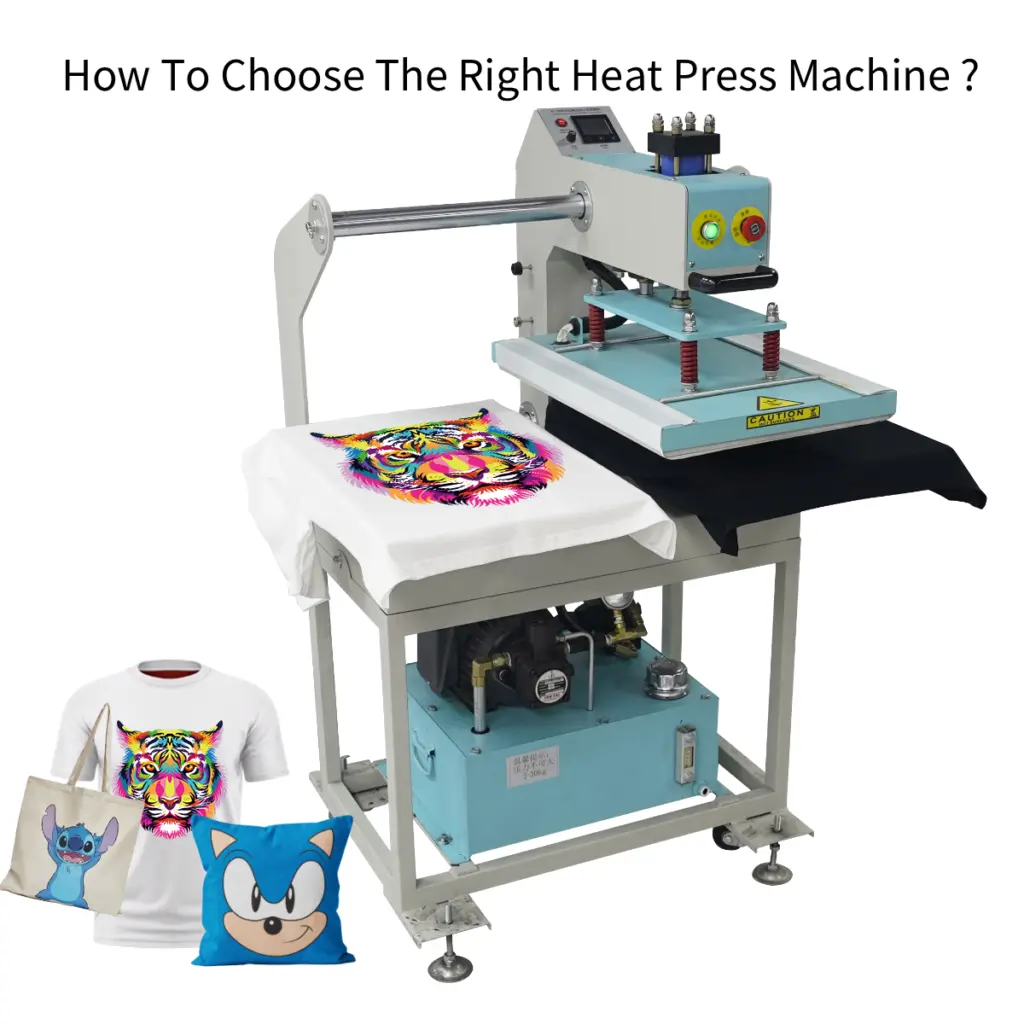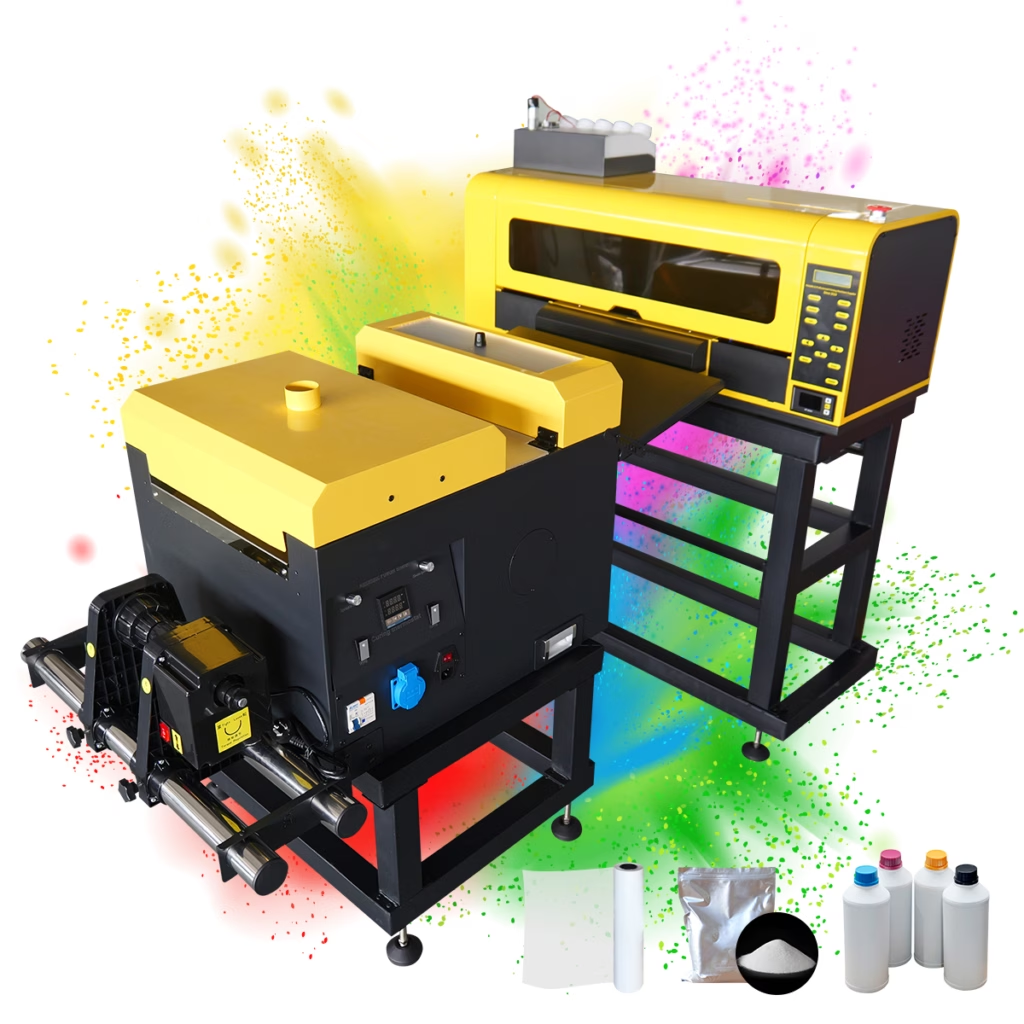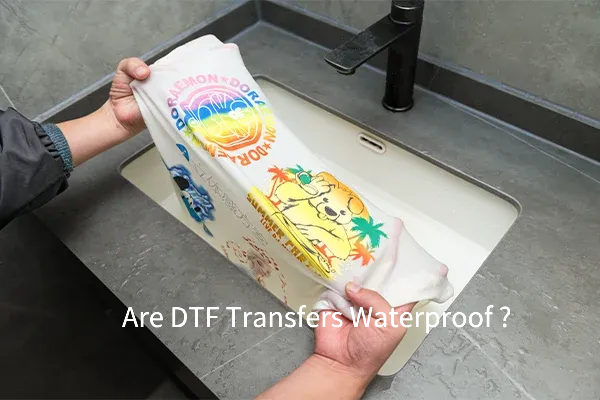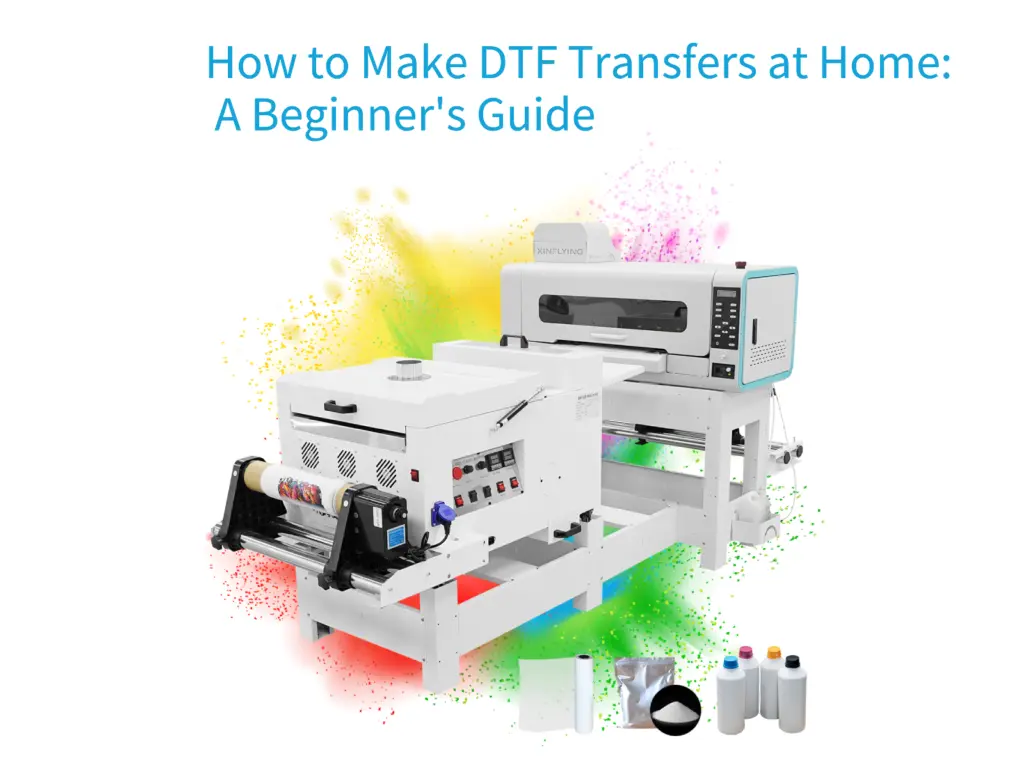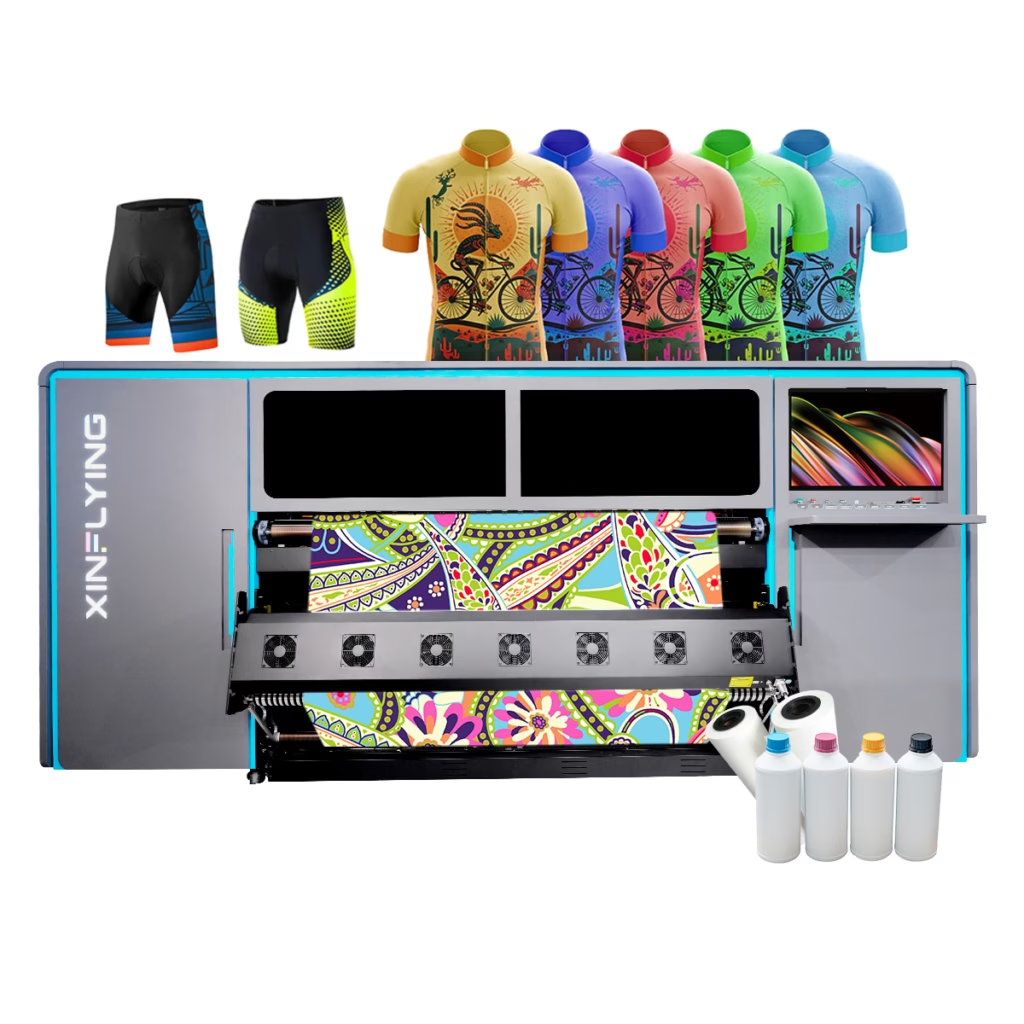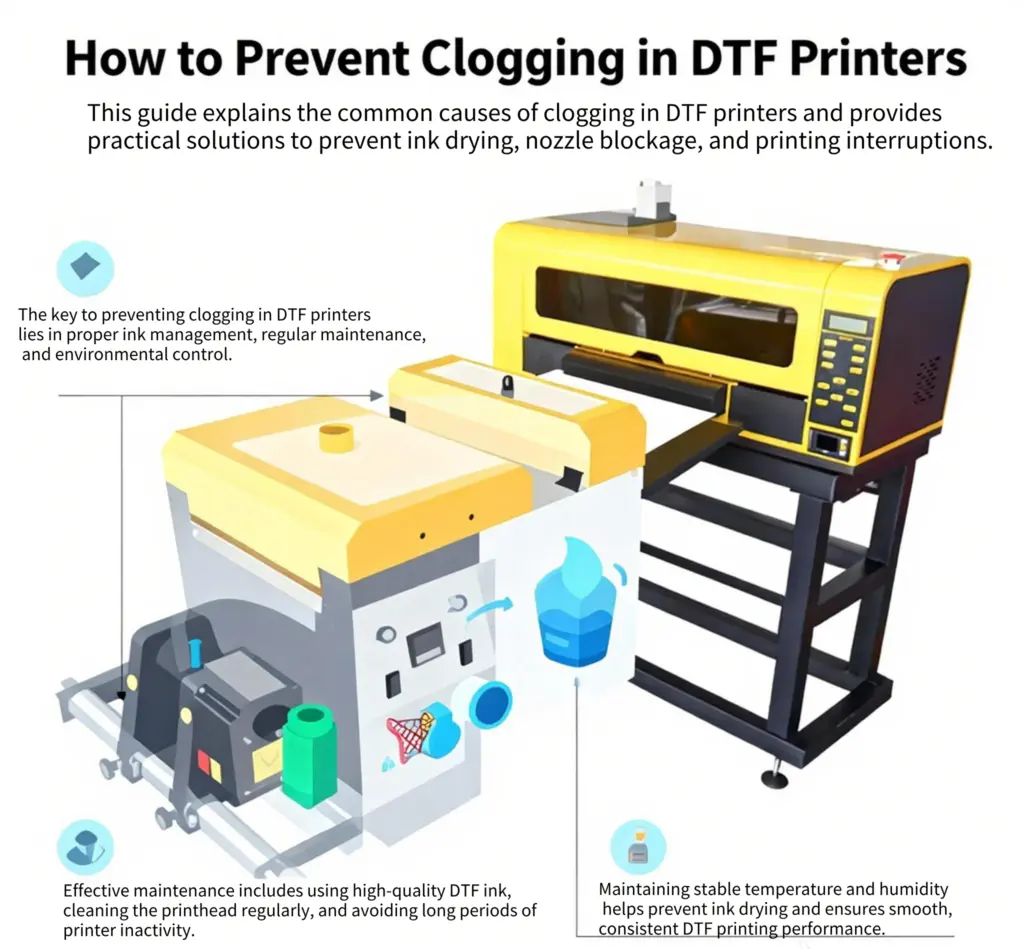क्या आपने कभी सोचा है कि डीटीएफ प्रिंटिंग को स्क्रीन प्रिंटिंग से क्या अलग करता है? मुद्रण प्रौद्योगिकी की निरंतर विकसित हो रही दुनिया में, यह जानना महत्वपूर्ण है कि कौन सी विधि आपकी आवश्यकताओं के लिए सबसे उपयुक्त है. आइए डीटीएफ और स्क्रीन प्रिंटिंग की जटिलताओं के बारे में जानें, आपको एक सूचित विकल्प चुनने में मदद करने के लिए उनके फायदे और नुकसान पर विचार करना. मुद्रण की आकर्षक दुनिया का पता लगाने के लिए तैयार हैं? आएँ शुरू करें!
डीटीएफ प्रिंटिंग क्या है??
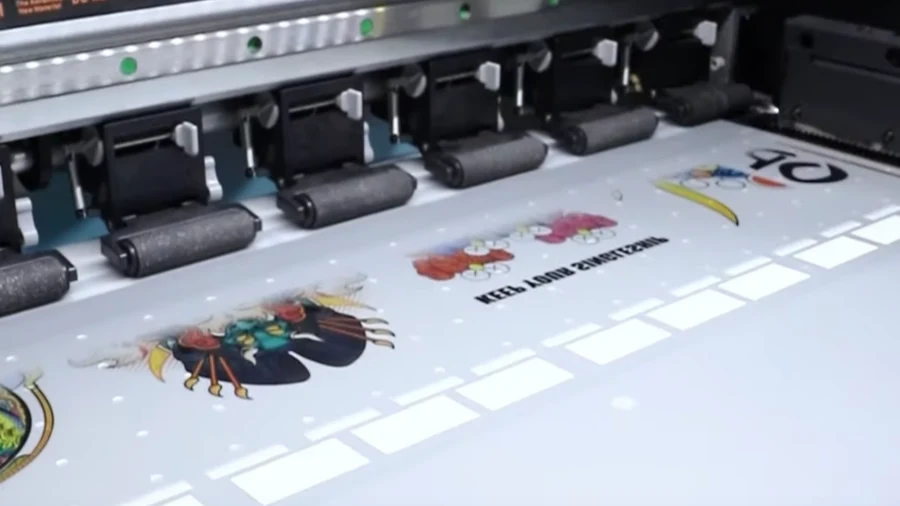
डीटीएफ, या डायरेक्ट-टू-फिल्म प्रिंटिंग, एक आधुनिक तकनीक है जहां डिज़ाइन को एक विशेष पर मुद्रित किया जाता है डीटीएफ फिल्म और फिर गर्मी का उपयोग करके कपड़े पर स्थानांतरित किया गया. इस नवीन पद्धति ने मुद्रण उद्योग में क्रांति ला दी है, बहुमुखी प्रतिभा और उच्च गुणवत्ता वाले परिणाम प्रदान करते हैं जो विभिन्न प्रकार की सामग्रियों और अनुप्रयोगों को पूरा करते हैं.
डीटीएफ प्रिंटिंग के फायदे और नुकसान
डीटीएफ प्रिंटिंग के फायदे
डीटीएफ प्रिंटिंग के कई फायदे हैं जो इसे एक लोकप्रिय विकल्प बनाते हैं. पहला, यह अत्यधिक है बहुमुखी, आपको सामग्री की एक विस्तृत श्रृंखला पर प्रिंट करने की अनुमति देता है, शामिल कपास, नायलॉन, पॉलिएस्टर, और मिश्रण करता है, वगैरह. इसका मतलब है कि आप कपड़े की अनुकूलता की चिंता किए बिना कस्टम टी-शर्ट से लेकर प्रचार आइटम तक सब कुछ बना सकते हैं. इसके अतिरिक्त, डीटीएफ प्रिंट उनके लिए जाने जाते हैं स्थायित्व और जीवंत रंग, यह सुनिश्चित करना कि आपके डिज़ाइन समय के साथ स्पष्ट और आकर्षक बने रहें. प्लस, डीटीएफ मुद्रण प्रक्रिया अपेक्षाकृत है सीधा और उपयोगकर्ता के अनुकूल, इसे शुरुआती लोगों के लिए भी सुलभ बनाना.
डीटीएफ प्रिंटिंग के नुकसान
तथापि, डीटीएफ प्रिंटिंग अपनी कमियों के बिना नहीं है. मुख्य विपक्षों में से एक इसकी प्रारंभिक लागत है डीटीएफ प्रिंटर मशीन और सामग्री, जो छोटे व्यवसायों के लिए एक महत्वपूर्ण निवेश हो सकता है. इसके अतिरिक्त, जबकि प्रक्रिया स्वयं उपयोगकर्ता के अनुकूल है, इष्टतम परिणाम प्राप्त करने के लिए थोड़े से सीखने और विस्तार पर ध्यान देने की आवश्यकता होती है. अंत में, डीटीएफ फिल्म और चिपकने वाला पाउडर DTF में प्रयुक्त प्रक्रिया में एक अतिरिक्त कदम जोड़ सकता है, अन्य तरीकों की तुलना में इसमें थोड़ा अधिक समय लगता है.
स्क्रीन प्रिंटिंग क्या है?
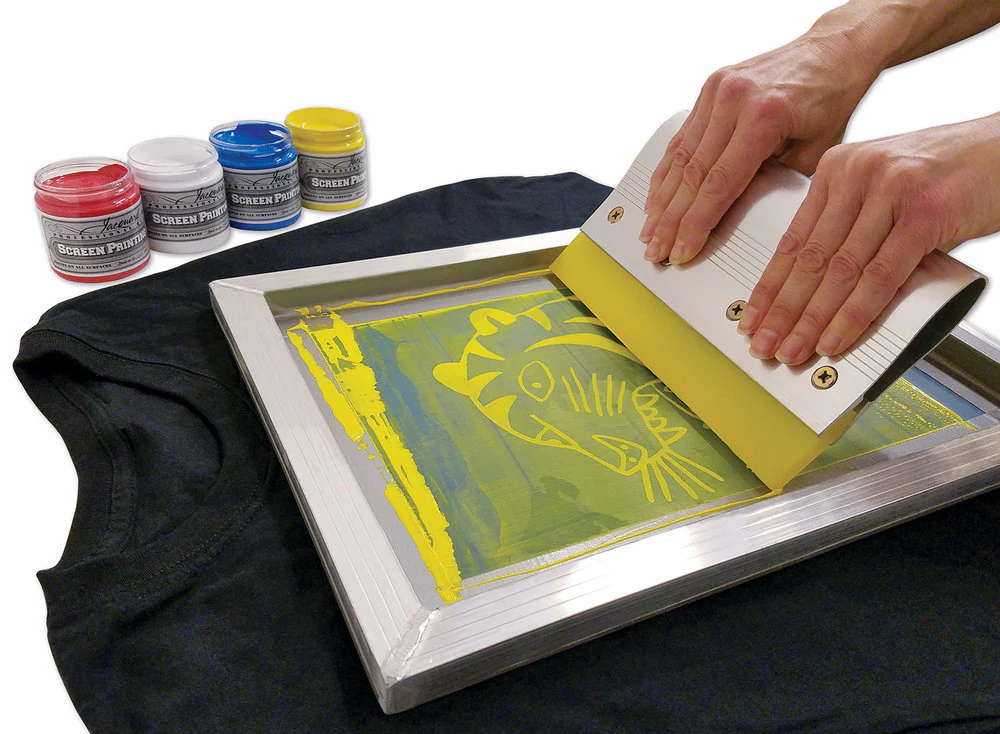
स्क्रीन प्रिंटिंग एक पारंपरिक तरीका है जहां स्याही को एक स्टेंसिल के माध्यम से धकेला जाता है (या स्क्रीन) कपड़े पर. यह तकनीक सदियों से चली आ रही है और जीवंत उत्पादन के लिए प्रसिद्ध है, लंबे समय तक चलने वाले प्रिंट, विशेषकर थोक ऑर्डर में.
स्क्रीन प्रिंटिंग के फायदे और नुकसान
स्क्रीन प्रिंटिंग के फायदे
जब स्क्रीन प्रिंटिंग की बात आती है तो चमक आती है कुशलतापूर्वक बड़ी मात्रा में प्रिंट तैयार करना. यह थोक ऑर्डर के लिए लागत प्रभावी है और टिकाऊ डिलीवरी देता है, उच्च गुणवत्ता वाले परिणाम. प्रिंट हैं जीवंत और बिना फीका पड़े बार-बार धोने का सामना कर सकता है, इसे कस्टम परिधान और व्यापारिक वस्तुओं के लिए आदर्श बनाना. इसके अतिरिक्त, स्याही के प्रकार के संदर्भ में स्क्रीन प्रिंटिंग अत्यधिक बहुमुखी प्रतिभा प्रदान करती है, धात्विक या अंधेरे में चमकने वाले प्रिंट जैसे विशेष प्रभावों की अनुमति.
स्क्रीन प्रिंटिंग के नुकसान
दूसरे पहेलू पर, स्क्रीन प्रिंटिंग की अपनी सीमाएँ हैं. सेटअप प्रक्रिया है श्रम-गहन और समय-उपभोक्ता, विशेष रूप से अनेक रंगों वाले जटिल डिज़ाइनों के लिए. यह विधि सामग्री प्रकारों के साथ उतनी लचीली नहीं है, मुख्य रूप से सबसे अच्छा काम कर रहा है सपाट सतहें और कपड़े. इसके अतिरिक्त, इसमें शामिल महत्वपूर्ण सेटअप लागत के कारण छोटे ऑर्डर के लिए स्क्रीन प्रिंटिंग लागत प्रभावी नहीं है.
डीटीएफ प्रिंटिंग बनाम. स्क्रीन प्रिंटिंग
मुद्रण उद्योग में डीटीएफ प्रिंटिंग और स्क्रीन प्रिंटिंग दो सामान्य मुद्रण तकनीकें हैं. आइए डीटीएफ और स्क्रीन प्रिंटिंग के बीच अंतर को समझें.
सहनशीलता
जब डीटीएफ बनाम स्क्रीन प्रिंटिंग टिकाऊपन की बात आती है, दोनों विधियाँ लंबे समय तक चलने वाले प्रिंट प्रदान करती हैं. तथापि, डीटीएफ प्रिंट अधिक लचीले होते हैं और समय के साथ उनके टूटने की संभावना कम होती है, जबकि स्क्रीन प्रिंट धोने के प्रतिरोध में उत्कृष्ट है.
प्रिंट गुणवत्ता
प्रिंट गुणवत्ता एक अन्य महत्वपूर्ण कारक है. डीटीएफ प्रिंटिंग उच्च-रिज़ॉल्यूशन प्रदान करती है, जीवंत रंगों के साथ विस्तृत प्रिंट, इसे जटिल डिज़ाइनों के लिए उपयुक्त बनाना. स्क्रीन प्रिंटिंग, उत्कृष्ट गुणवत्ता भी प्रदान करते हुए, बारीक विवरण और जटिल रंग ग्रेडिएंट्स के साथ संघर्ष कर सकते हैं.
कपड़े और सामग्री
सामग्री अनुकूलता के मामले में डीटीएफ प्रिंटिंग सबसे अलग है. आप लगभग किसी भी कपड़े पर प्रिंट कर सकते हैं, सिंथेटिक्स और मिश्रणों सहित. स्क्रीन प्रिंटिंग अधिक सीमित है, मुख्य रूप से कपास और अन्य प्राकृतिक रेशों पर सबसे अच्छा काम करता है.
स्याही के प्रकार
डीटीएफ विशेष स्याही का उपयोग करता है जो विभिन्न सामग्रियों के साथ अच्छी तरह से जुड़ जाता है, स्थायित्व और जीवंतता सुनिश्चित करना. स्क्रीन प्रिंटिंग में विभिन्न प्रकार की स्याही का उपयोग किया जाता है, प्लास्टिसोल और पानी आधारित स्याही सहित, जो अद्वितीय प्रभाव उत्पन्न कर सकता है लेकिन सभी सामग्रियों का अच्छी तरह से पालन नहीं कर सकता है.
रंग विकल्प
रंग विकल्पों के संदर्भ में, डीटीएफ प्रिंटिंग आसानी से फुल-कलर को संभाल सकती है, फोटोग्राफिक-गुणवत्ता वाले प्रिंट. प्रत्येक रंग के लिए एकाधिक स्क्रीन बनाने की जटिलता और लागत के कारण स्क्रीन प्रिंटिंग आमतौर पर कम रंगों तक सीमित होती है.
उत्पादन समय
दोनों विधियों के बीच उत्पादन समय काफी भिन्न हो सकता है. छोटे से मध्यम ऑर्डर के लिए डीटीएफ प्रिंटिंग आम तौर पर तेज़ और अधिक कुशल होती है. स्क्रीन प्रिंटिंग, तथापि, प्रारंभिक सेटअप पूरा होने के बाद बड़े ऑर्डर के साथ यह अधिक समय-कुशल हो जाता है.
लागत क्षमता
लागत दक्षता ऑर्डर आकार पर निर्भर करती है. छोटे से मध्यम रन के लिए, सेटअप लागत कम होने के कारण डीटीएफ प्रिंटिंग अधिक लागत प्रभावी है. स्क्रीन प्रिंटिंग, वहीं दूसरी ओर, बड़े बैचों के लिए अधिक किफायती हो जाता है.
क्या डीटीएफ स्क्रीन प्रिंटिंग से बेहतर है??
इसलिए, क्या डीटीएफ स्क्रीन प्रिंटिंग से बेहतर है?? यह आपकी विशिष्ट आवश्यकताओं पर निर्भर करता है. यदि आपको बहुमुखी प्रतिभा की आवश्यकता है, उच्च विवरण, और त्वरित सेटअप, डीटीएफ आपका सर्वोत्तम दांव हो सकता है. सरल डिज़ाइन के साथ बड़ी मात्रा में ऑर्डर के लिए, स्क्रीन प्रिंटिंग एक मजबूत और विश्वसनीय विकल्प बनी हुई है.
डीटीएफ बनाम. स्क्रीन प्रिंटिंग, कैसे चुने?
डीटीएफ और स्क्रीन प्रिंटिंग के बीच चयन करना आपकी परियोजना आवश्यकताओं पर निर्भर करता है. सामग्री पर विचार करें, डिजाइन जटिलता, ऑर्डर का आकार, और बजट. जटिल के लिए, छोटे बैच की परियोजनाएँ, डीटीएफ विजेता है. सीधे डिज़ाइन वाले थोक ऑर्डर के लिए, स्क्रीन प्रिंटिंग को हराना कठिन है.
निष्कर्ष
के भव्य प्रदर्शन में डीटीएफ बनाम स्क्रीन प्रिंटिंग, इसका कोई एक आकार-फिट-सभी उत्तर नहीं है. प्रत्येक विधि की अपनी ताकत और आदर्श अनुप्रयोग होते हैं. को समझना डीटीएफ और स्क्रीन प्रिंटिंग के बीच अंतर आपकी विशिष्ट आवश्यकताओं के लिए सर्वोत्तम विकल्प चुनने में आपकी सहायता करता है, यह सुनिश्चित करना कि आपके प्रिंट हमेशा सर्वोत्तम हों.
पूछे जाने वाले प्रश्न
1. क्या डीटीएफ प्रिंटिंग का उपयोग किसी भी कपड़े पर किया जा सकता है??
हाँ, डीटीएफ प्रिंटिंग अत्यधिक बहुमुखी है और इसका उपयोग कपड़ों की एक विस्तृत श्रृंखला पर किया जा सकता है, कपास सहित, पॉलिएस्टर, और मिश्रण करता है.
2. क्या स्क्रीन प्रिंटिंग विस्तृत डिज़ाइन के लिए उपयुक्त है??
स्क्रीन प्रिंटिंग विस्तृत डिज़ाइन संभाल सकती है, लेकिन यह बोल्ड के मामले में उत्कृष्ट है, सरल ग्राफिक्स. जटिल विवरण के लिए, डीटीएफ प्रिंटिंग एक बेहतर विकल्प हो सकता है.
3. स्क्रीन प्रिंटिंग की तुलना में डीटीएफ की लागत कैसी है??
कम सेटअप लागत के कारण छोटे से मध्यम ऑर्डर के लिए डीटीएफ प्रिंटिंग आम तौर पर अधिक लागत प्रभावी होती है, जबकि बड़े बैचों के लिए स्क्रीन प्रिंटिंग अधिक किफायती हो जाती है.
4. कौन सी विधि अधिक टिकाऊ है, डीटीएफ या स्क्रीन प्रिंटिंग?
दोनों विधियाँ टिकाऊ प्रिंट प्रदान करती हैं, लेकिन डीटीएफ प्रिंट अधिक लचीले होते हैं और इनके टूटने का खतरा कम होता है, जबकि स्क्रीन प्रिंट अत्यधिक धुलाई प्रतिरोधी होते हैं.
5. DTF के बीच सेटअप समय में क्या अंतर है? बनाम. स्क्रीन प्रिंट स्थानांतरण?
डीटीएफ प्रिंटिंग में सेटअप समय जल्दी लगता है, इसे छोटे ऑर्डर के लिए आदर्श बनाना. स्क्रीन प्रिंटिंग के लिए अधिक सेटअप समय की आवश्यकता होती है लेकिन बड़े ऑर्डर के साथ यह अधिक कुशल हो जाती है.


